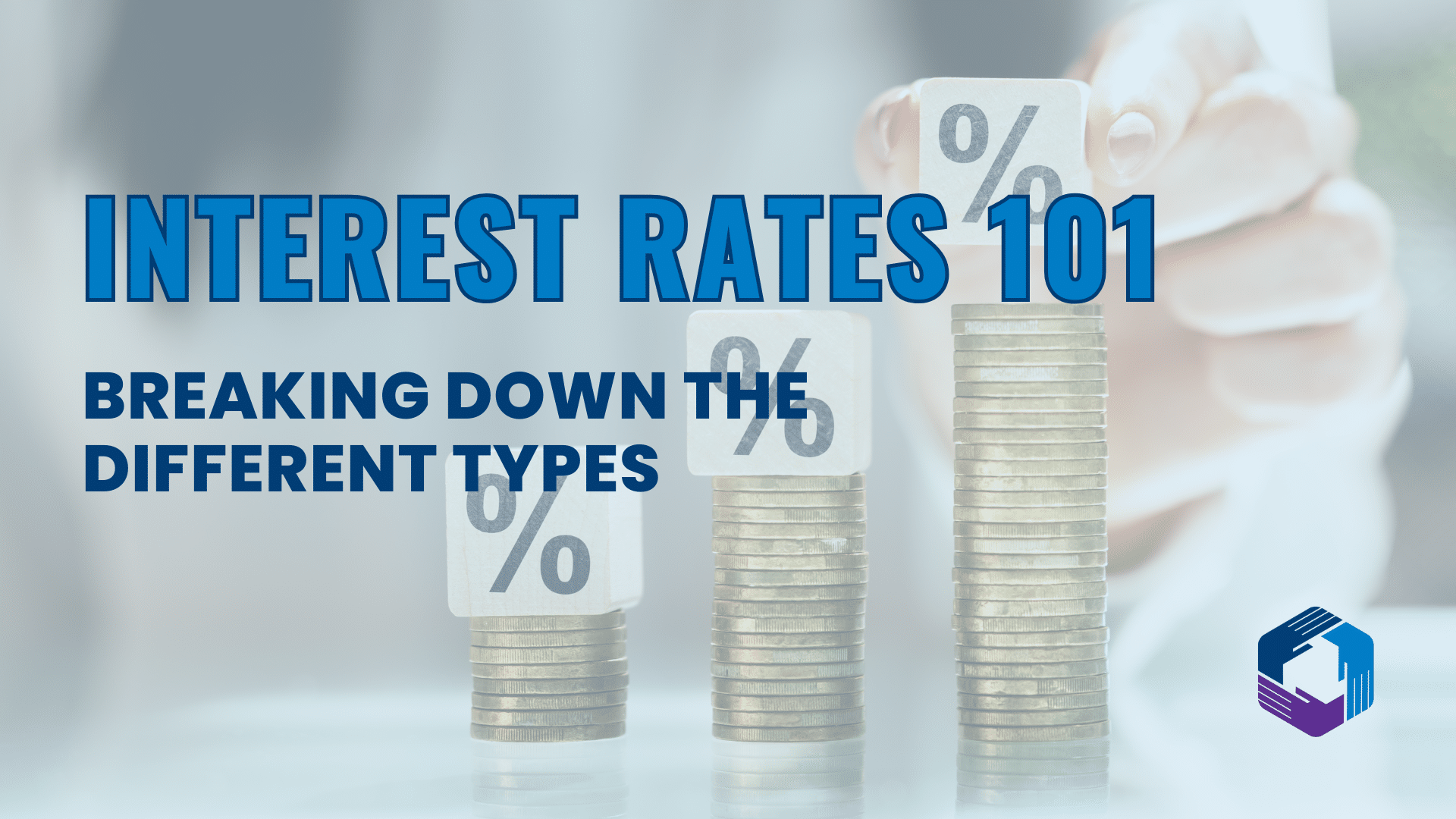
Let’s be real: interest rates can be super confusing. Different financial institutions call them different things, and sometimes it feels like you need a finance degree just to read the fine print. But understanding what kind of interest you’re signing up for—whether you’re borrowing or saving—is key to making smart financial choices. Interest isn’t just about loans. It’s also about what you earn—like with savings accounts and investments.
To help, we’re breaking down the most common types of interest rates and how they might show up in your everyday life.
Simple Interest (a.k.a. Regular Interest)
Simple interest is exactly what it sounds like—simple. It’s calculated only on the original amount you borrow or invest (called the principal). It doesn’t change over time or include previous interest payments.
Formula:
Simple Interest = Principal × Interest Rate × Time
Example – Earning Money
If you invest $2,000 in a 4-year deposit at 12% simple interest, you’ll earn:
$2,000 × 0.12 × 4 = $960 in interest
Your total: $2,960
Example – Owing Money
If you borrow $2,000 at 4% simple interest, that’s:
$2,000 × 0.04 = $80 per year in interest (in addition to repaying the $2,000)
After 4 years and without making any payments, you would owe $2,320.
Compound Interest (a.k.a. Interest on Interest)
Compound interest means the interest you earn or owe gets added to the principal—so the total grows over time. Loans can have different increments on when the interest is added to the principal, with anywhere from constant to annually. Compound interest is how investments flourish and how debt can creep up on you.
Example – Earning Money
You invest $2,000 with a 12% annual compound interest rate for 4 years. The interest that you gained gets added to the $2,000 and then it’s 12% off that total, and so on:
$2,000 × [(1 + 0.12)^4 – 1] = $1,147.04 in interest
Your total: $3,147.04
Example – Owing Money
You borrow $2,000 at 4% annual compound interest and accrue $80 in interest in your first year. Next year, you pay interest on $2,080, not just the original $2,000. So, 4% of $2,080 = $83.20 in interest. That will continue to add to the principal moving forward.
This starts to quickly add up. After 4 years and without making any payments, you would owe $2,339.72.
Prime Interest Rate
The prime rate is what banks offer their most creditworthy customers. It’s usually the lowest available interest rate, so having good credit helps you qualify for it. That’s one of many reasons why improving your credit score can be so important for your overall financial health.
We know that you can get the credit score of your dreams, and we’re here to help make that a reality for you. You can meet with a financial educator to develop a personalized plan to boost your credit score. Want consistent support throughout the process? Sign up for financial coaching! If you’d rather start with learning the basics, you can always join our quarterly personal finance classes to learn more about credit, budgeting, and more.
APR vs. APY – What’s the Difference?
These two get mixed up a lot, but they mean different things:
- APR (Annual Percentage Rate): The yearly cost of borrowing money. It includes interest and some fees but does not take compounding into account.
- APY (Annual Percentage Yield): Shows the real return on an investment or cost of a loan by factoring in compound interest.
If you’re comparing credit cards or savings accounts, knowing the difference between APR and APY can help you pick the better deal.
Fixed Interest Rate
A fixed interest rate stays the same for the entire term of your loan or investment. You’ll see this a lot with mortgages or auto loans.
Example
If your loan has a 5% fixed rate, you’ll always pay 5%—no matter what’s happening in the market. That consistency makes it easier to plan your budget.
💡Tip: Some lenders include fine print that allow rate hikes if you miss payments (especially on credit cards), so always read the terms.
Variable Interest Rate
Variable rates change over time. These are often tied to a benchmark, like the prime rate or market indexes.
Example
A loan starts at 5%, but the rate could go up or down each year. You might pay 6% one year and 4% the next.
Variable rates give lenders flexibility in fluctuating markets, but they can make your monthly payments unpredictable. That’s why they’re often riskier for borrowers.
Interest rates can feel like a confusing alphabet soup, and if you’re overwhelmed—you’re not alone. Be kind to yourself! Personal finance isn’t something most of us were taught in school. If you want help understanding how this applies to your situation, meeting with a financial educator or coach is a great next step.
Remember: knowledge is power, and you’ve already taken the first step!
Sources
- Understanding the 7 Types of Interest Rate – SmartAsset
- Simple Interest vs Compound Interest – Corporate Finance Institute
- Types of Interest – Corporate Finance Institute
- Prime Rate: Definition and How It Works – Investopedia
- Understanding Interest: A Beginner’s Guide to Different Types of Interest – MoneyMade
- What Is an APR? – Experian





 Regina Fowler (She/Her)
Regina Fowler (She/Her) Aaron Tucker Jr. (He/Him)
Aaron Tucker Jr. (He/Him) Nikol Theberge (She/Her)
Nikol Theberge (She/Her) Andrea Stewart-Douglas (She/Her)
Andrea Stewart-Douglas (She/Her) Anniece Robinson (She/Her)
Anniece Robinson (She/Her) Elizabeth ‘Liz’ Myers (She/Her)
Elizabeth ‘Liz’ Myers (She/Her) Carrie Driscoll (She/Her)
Carrie Driscoll (She/Her) Joyce Kampwerth (She/Her)
Joyce Kampwerth (She/Her) Allison Cook (She/Her)
Allison Cook (She/Her) YaNan Bledsoe (She/Her)
YaNan Bledsoe (She/Her)















